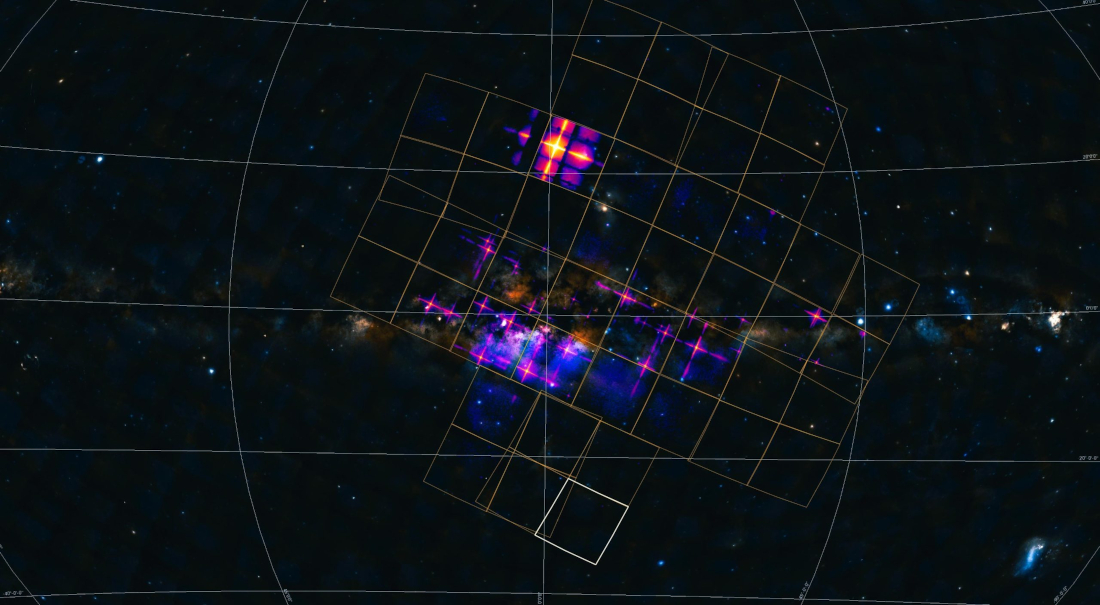
 Credit: EPSC, NAO/CAS; DSS; ESO
Credit: EPSC, NAO/CAS; DSS; ESO
A Lobster's Eye View of the Galactic Center
The Einstein Probe space mission is a joint collaboration between the Chinese Academy of Science, the European Space Agency and institutes in Germany and France, designed to monitor the extreme goings-on in the X-ray sky. The main instrument aboard the Einstein Probe is the Wide-Field X-ray Telescope (or WXT), which uses technology which mimics the optics in a lobster's eye. Unlike human eyes, which use lenses to focus light, lobster eyes use long, narrow cells distributed over a spherical surface to reflect and focus light to a single focal plane. While the resolution of a lobster's eye is poor, the advantage is that lobster-eye optics have a very wide field of view. The WXT can thus instantaneously monitor a large portion of the X-ray sky, and can cover the complete sky in only 3 spacecraft orbits around the earth. The image above is the first-light image by the WXT, a panorama of the center of the Milky Way, obtained during the Einstein Probe's in-orbit checkout phase. The WXT panorama in blue, red and yelllow is superimposed on an optical image of the Milky Way obtained by ground-based telescopes from the European Southern Observatory. The WXT will keep a lobster-eye out for any extreme outbursts in the X-ray sky, for more detailed follow-up observations with Einstein Probe's additional instrument, the Follow-up X-ray Telescope (FXT), and other ground- and space-based telescopes.
Published: April 29, 2024
<
HEA Dictionary ● Archive
● Search HEAPOW
● Other Languages
● HEAPOW on Facebook
● Download all Images
● Education ● HEAD
>

Each week the HEASARC
brings you new, exciting and beautiful images from X-ray and Gamma ray
astronomy. Check back each week and be sure to check out the HEAPOW archive!
Page Author: Dr. Michael F. Corcoran
Last modified Monday, 29-Apr-2024 11:09:43 EDT


